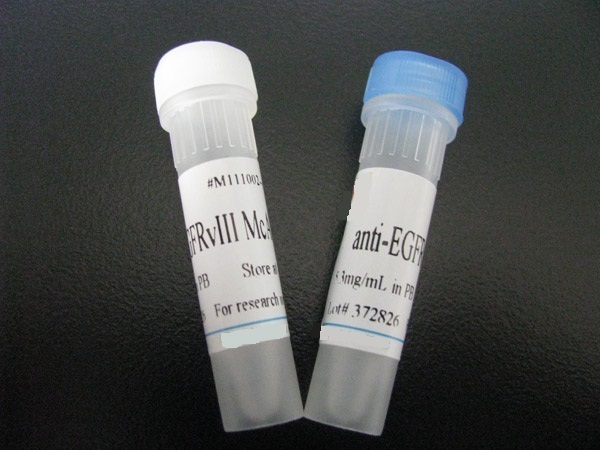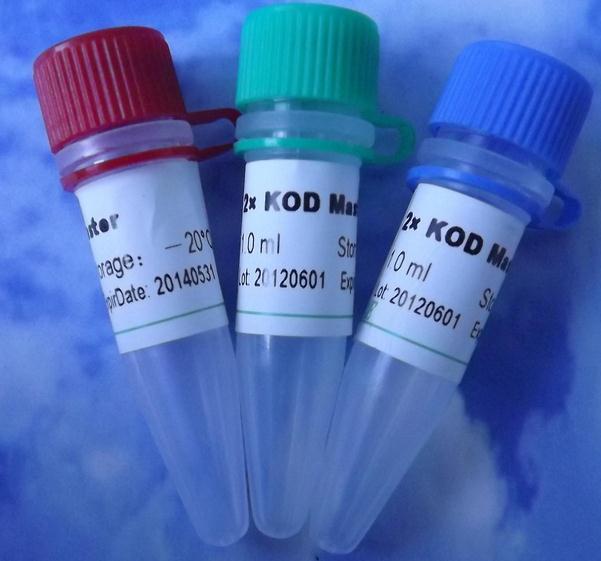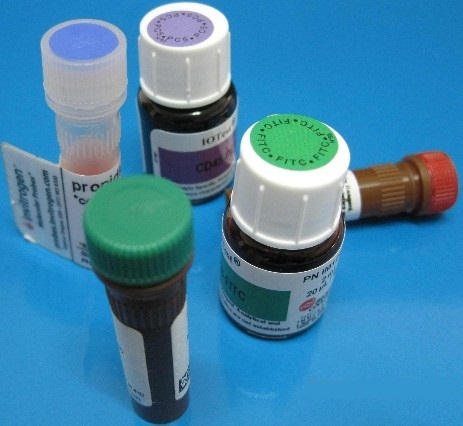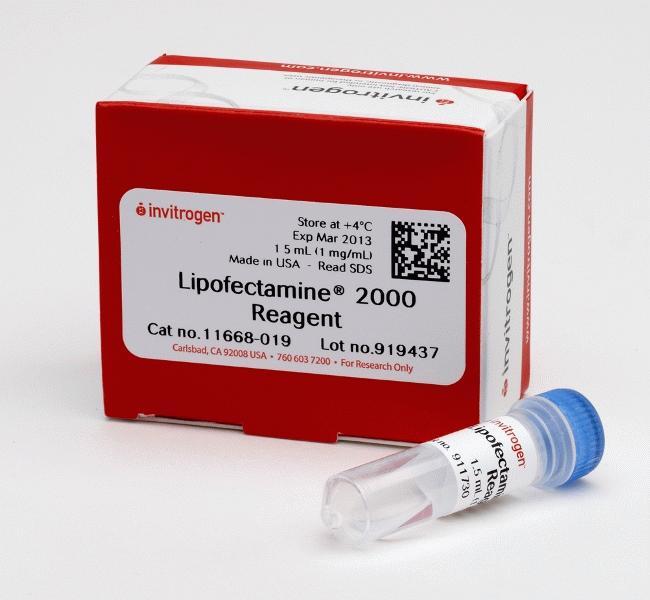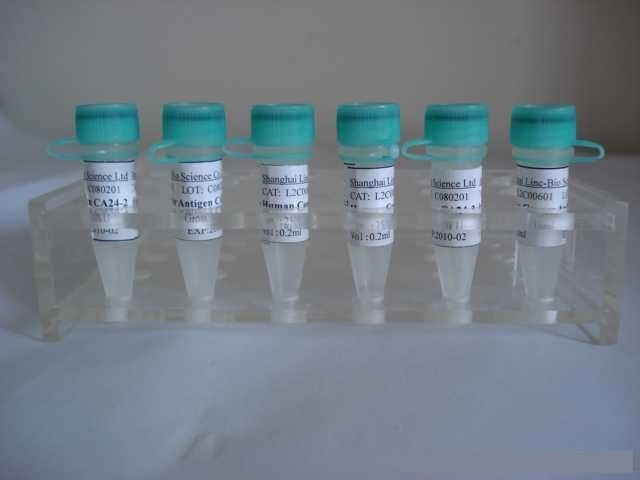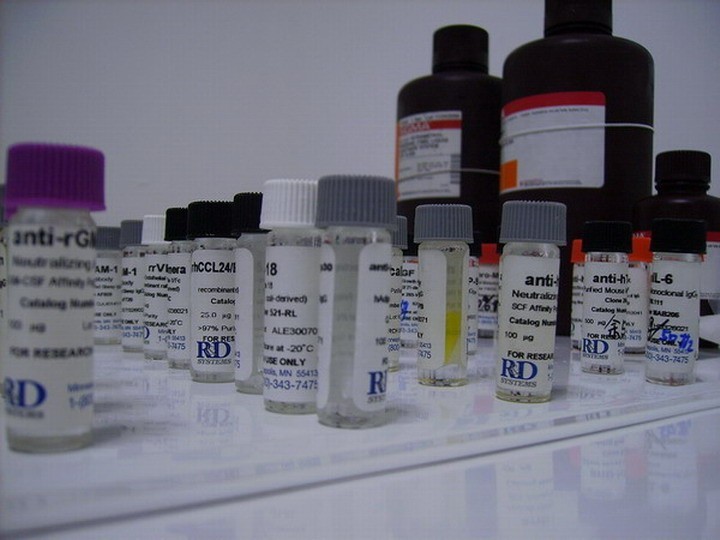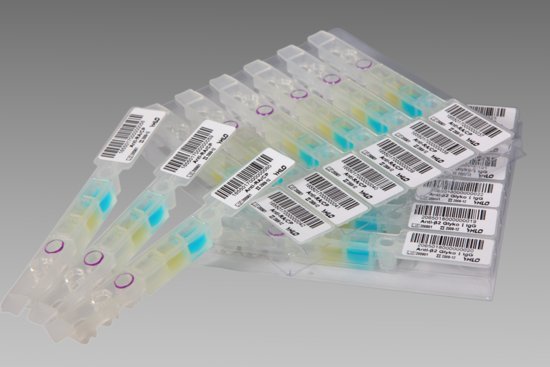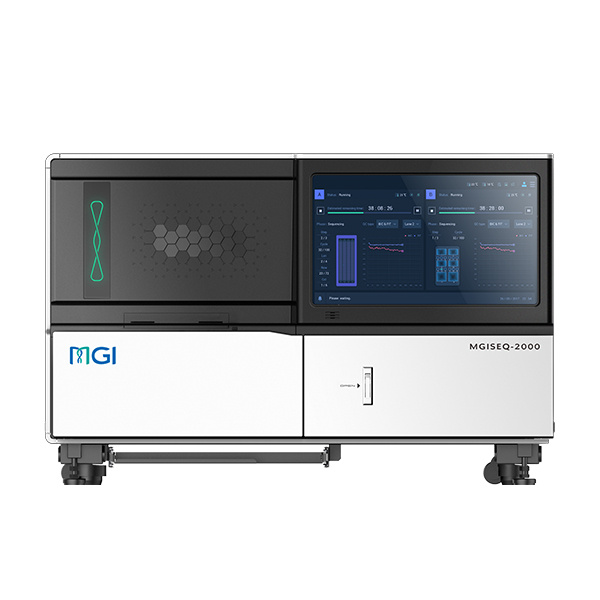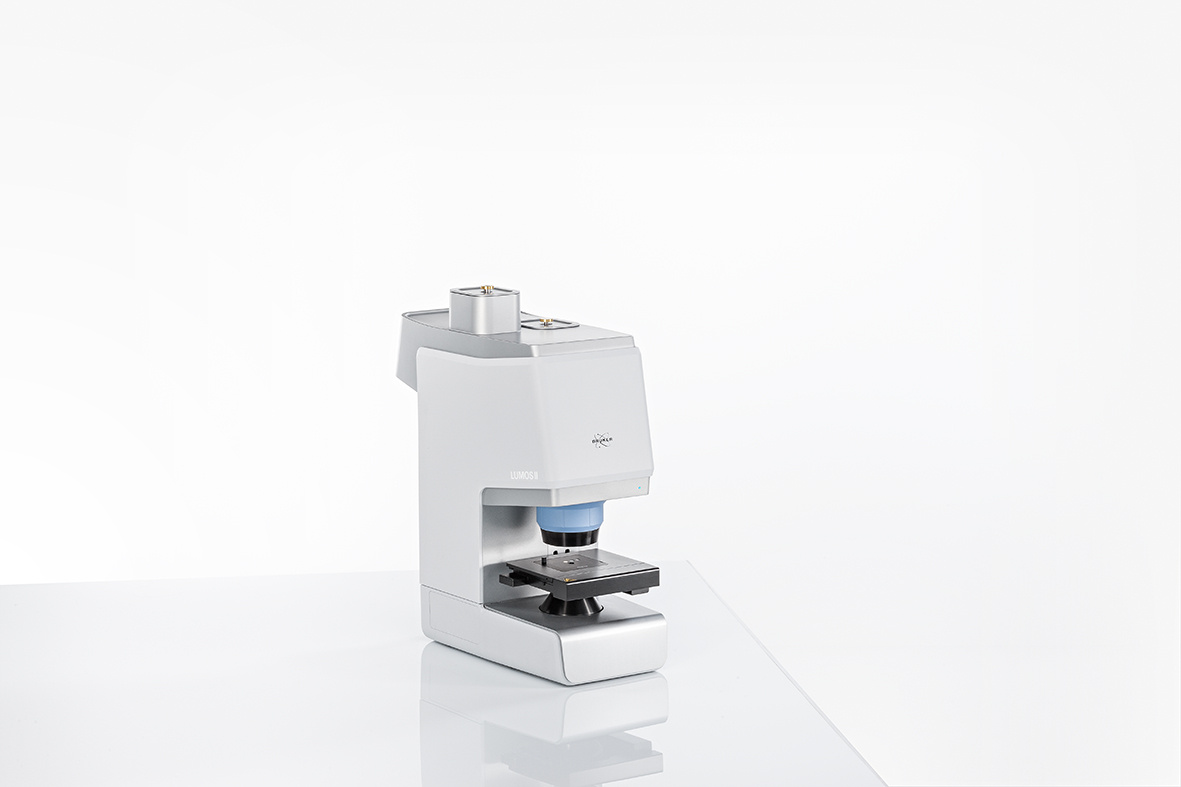浓 度 1mg/1ml
规 格 0.2ml/200μg
抗体来源 Rabbit
克隆类型 polyclonal
交叉反应 Human
产品类型 一抗
研究领域 细胞生物 神经生物学 Alzheimer's
蛋白分子量 predicted molecular weight: 92kDa
性 状 Lyophilized or Liquid
免 疫 原 KLH conjugated synthetic peptide derived from human DISC1 C-terminus
亚 型 IgG
纯化方法 affinity purified by Protein A
储 存 液 0.01M PBS, pH 7.4 with 10 mg/ml BSA and 0.1% Sodium azide
产品应用 WB=1:100-500 ELISA=1:500-1000 IP=1:20-100 IHC-P=1:100-500 IHC-F=1:100-500 IF=1:100-500
(石蜡切片需做抗原修复)
not yet tested in other applications.
optimal dilutions/concentrations should be determined by the end user.
保存条件 Store at -20 °C for one year. Avoid repeated freeze/thaw cycles. The lyophilized antibody is stable at room temperature for at least one month and for greater than a year when kept at -20°C. When reconstituted in sterile pH 7.4 0.01M PBS or diluent of antibody the antibody is stable for at least two weeks at 2-4 °C.
Important Note This product as supplied is intended for research use only, not for use in human, therapeutic or diagnostic applications.
DISC1 N端抗体产品介绍 DISC1 (disrupted in schizophrenia 1) is a protein with multiple coiled coil motifs which is located in the nucleus, cytoplasm and mitochondria. DISC1 is a multifunctional protein that is involved in neurite outgrowth and cortical development, through its interaction with proteins of the centrosome and cytoskeletal system, and is implicated in schizophrenia. Regions of the primate brain which express DISC1, including the hippocampus, lateral septum, amygdala, cerebral cortex, cerebellum and paraventricular hypothalamus, are reported to be involved in schizophrenia in humans.
Function : Involved in the regulation of multiple aspects of embryonic and adult neurogenesis. Required for neural progenitor proliferation in the ventrical/subventrical zone during embryonic brain development and in the adult dentate gyrus of the hippocampus. Participates in the Wnt-mediated neural progenitor proliferation as a positive regulator by modulating GSK3B activity and CTNNB1 abundance. Plays a role as a modulator of the AKT-mTOR signaling pathway controlling the tempo of the process of newborn neurons integration during adult neurogenesis, including neuron positioning, dendritic development and synapse formation. Inhibits the activation of AKT-mTOR signaling upon interaction with CCDC88A. Regulates the migration of early-born granule cell precursors toward the dentate gyrus during the hippocampal development. Plays a role, together with PCNT, in the microtubule network formation.
Subcellular Location : Cytoplasm. Cytoplasm > cytoskeleton. Cytoplasm > cytoskeleton > centrosome. Cell junction > synapse > postsynaptic cell membrane > postsynaptic density. Colocalizes with NDEL1 in the perinuclear region and the centrosome (By similarity). Localizes to punctate cytoplasmic foci which overlap in part with mitochondria. Colocalizes with PCNT at the centrosome.
Tissue Specificity : Ubiquitous. Highly expressed in the dentate gyrus of the hippocampus. Also expressed in the temporal and parahippocampal cortices and cells of the white matter.
DISEASE : Note=A chromosomal aberration involving DISC1 segregates with schizophrenia and related psychiatric disorders in a large Scottish family. Translocation t(1;11)(q42.1;q14.3). The truncated DISC1 protein produced by this translocation is unable to interact with ATF4, ATF5 and NDEL1.
Genetic variation in DISC1 is associated with susceptibility to schizophrenia type 9 (SCZD9) [MIM:604906]. A complex, multifactorial psychotic disorder or group of disorders characterized by disturbances in the form and content of thought (e.g. delusions, hallucinations), in mood (e.g. inappropriate affect), in sense of self and relationship to the external world (e.g. loss of ego boundaries, withdrawal), and in behavior (e.g bizarre or apparently purposeless behavior). Although it affects emotions, it is distinguished from mood disorders in which such disturbances are primary. Similarly, there may be mild impairment of cognitive function, and it is distinguished from the dementias in which disturbed cognitive function is considered primary. Some patients manifest schizophrenic as well as bipolar disorder symptoms and are often given the diagnosis of schizoaffective disorder.
Database links : Expression rises within the dentate gyrus and temporal cortex from the neonatal period to infancy, declines markedly in adolescence, and declines further with aging.
DISC1基因是蛋白质复合体中的一部分,它对大脑皮层发育过程中细胞的正常运动很重要。
DISC-1基因的变异增加了患精神分裂症的风险。研究人员发现,抑制老鼠的DISC1活性则改变了动物大脑的发育,引起了大脑皮层轻微的变异,而在对精神分裂症病人进行尸检时在其大脑中见到了此变化。研究人员还发现将DISC1与对大脑发育和调节神经传递素水平很重要的分子信号路径联系起来,精神病患者的神经传递素水平往往是不正常的。
新研究显示DISC1蛋白质与一个叫PDE4B的酶相互作用,而影响信号传递分子cAMP的活性。这个信号传递系统过去在其它试验系统中被发现与学习、记忆、以及情绪有关,这与该系统中的变化可能促成精神分裂症是一致的。
![]()




